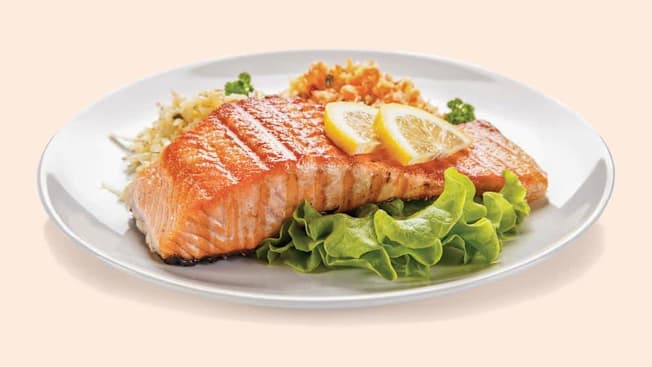Could You Have a Vitamin B12 Deficiency?
How to check your levels and boost them if they're low

Vitamin B12 is found only in animal foods, but in good amounts. So unless you’re a vegan, chances are you’re getting plenty of it in your diet. Yet many older adults are deficient in the vitamin. Why?
With age, your ability to absorb B12 from food is impaired, says Joel Mason, MD, a gastroenterologist and senior scientist at the Jean Mayer USDA Human Nutrition Research Center on Aging at Tufts University in Boston. The lining of the stomach becomes thinner—a condition called atrophic gastritis—which affects acid production, and you need acid to unlock B12 from food. About 40 percent of the population will develop atrophic gastritis by age 80, according to Mason. As a result, B12 deficiency is “by no means uncommon, afflicting up to 10 to 15 percent of older adults,” he says.
Signs of Low Vitamin B12
You need vitamin B12 to help make red blood cells, nerves, and DNA. The effects of deficiency can be varied and insidious—fatigue, a sore tongue, unsteadiness, muscle weakness, numbness in the hands and feet, depression, memory loss, and cognitive issues—and they’re often chalked up to other causes. “Symptoms may appear gradually over time and progress quickly in severe deficiencies,” says Raelene Brooks, PhD, dean at the University of Phoenix College of Nursing.
Know the Right Tests
“There is good rationale for routine screening of B12 status for everyone over the age of 60,” Mason says. A blood test for total B12 should be done in conjunction with a test for methylmalonic acid or holoTC. Both are sensitive indicators of low B12 levels in the cells, and they can help determine whether there’s a deficiency when blood levels of total B12 are at the lower end of the normal range. “Early detection of B12 deficiency is key in preventing permanent damage,” Brooks says.
The Case for Supplements
While vitamin absorption from food can decrease with age, consuming B12-rich foods is still important. Meat, poultry, fish, dairy, and eggs, as well as fortified foods, like some cereals and soy milk, contain the vitamin.
The recommended intake is 2.4 micrograms a day. Here’s the amount found in some commonly eaten foods:
• Salmon, roasted, 3.5 oz.: 2.8 mcg
• Ground beef, 85% lean, 3.5 oz.: 2.6 mcg
• Tuna, light, canned in water, 3 oz.: 2.5 mcg
• Milk, 1%, 1 cup: 1.2 mcg
• Greek yogurt, low-fat, 3/4 cup: 0.9 mcg
• Egg, large: 0.4 mcg
• Cheddar cheese, 1 oz.: 0.3 mcg
• Chicken breast, roasted, 3.5 oz.: 0.3 mcg
Older adults might benefit from a supplement, though, Brooks says. The vitamin is better absorbed when it comes from fortified foods and supplements. A supplement may be especially helpful if you have a medical condition that affects your gut health (such as celiac or inflammatory bowel disease), you’ve had stomach or small intestine surgery, or you regularly take acid-blocking drugs for heartburn or GERD, or metformin for diabetes, she says.
It’s not unusual for a multivitamin to have 25 mcg and for individual B12 supplements to have 500 or 1,000 mcg. At those levels, vitamin B12 is considered safe. But exactly how much you need will depend on your B12 test results and the factors that could be affecting your levels of the vitamin, so it’s best to check with your doctor.
Editor’s Note: This article also appeared in the November 2025 issue of Consumer Reports On Health.




















